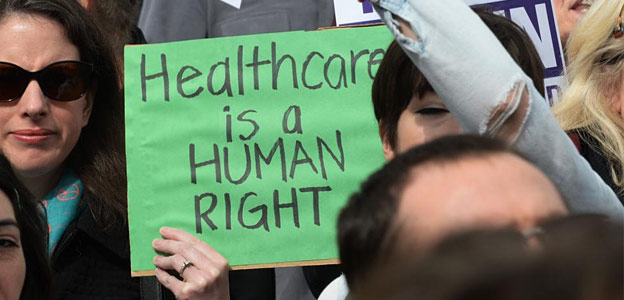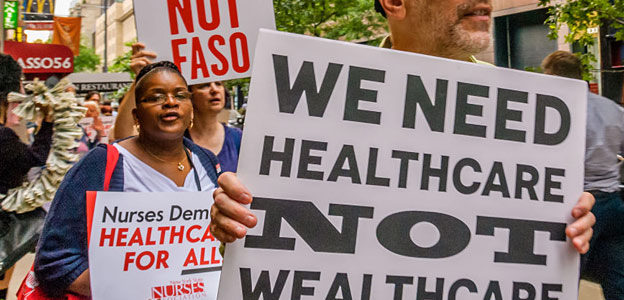United we stand, divided we fall. Simplistic idea? Yes, but it’s one of the core principles that this country was founded on. When it comes to the healthcare issue, however, it seems that another founding principle has taken precedence over the “one for all and all for one” mentality.
Free Enterprise. We live in the land of the so-called “American Dream,” but has this capitalistic concept contributed to the downfall of a healthcare system that clearly no longer works?
How the Current System Works
In a nutshell, the rich buy expensive private insurance, the middle class have employer subsidized insurance and the poor don’t have any insurance at all. More specifically, individuals who purchase private insurance pay higher premiums to cover the medical costs incurred by those that are uninsured and the government uses taxpayer money to subsidize hospitals that provide treatment for uninsured consumers.
Of course, having no health insurance doesn’t mean that you shouldn’t get sick or need medical attention. Just like not having an extensive library in your home or not being in close proximity to an art program doesn’t mean you shouldn’t read or visit museums or galleries.
And, just as we have publicly funded libraries, museums and various cultural programs, the administrative and operating costs of hospitals are partly covered by funds we pay in taxes to serve the needs of a system that we all use.
Unfortunately, the way that the tax money is regularly distributed has failed to do what it’s supposed to. In the current healthcare scenario in this country, it is insurance companies and not “we, the people” who are receiving the most benefit.
What Will Happen if the Current “Stalemate” on Reform Continues?
The healthcare issue has been on the political table since the days of Harry Truman. Many have tried and failed to bring sweeping changes to how we take care of our “poor, tired and huddled masses.” Some critics of healthcare reform believe that changing the way things currently work will cost them more tax money.
What they fail to realize, though, is that it’s not the free or low-cost medical care that the uninsured are getting that is costing so much money, but rather the bureaucratic, administrative wastefulness and bloated prices of largely unregulated insurance and pharmaceutical companies.
According to a recent Thomson Reuters report on healthcare analytics, there is an approximate annual waste of 700 billion dollars in kickbacks, scams, fraudulent claims and administrative costs.

What Are Our Options?
What people need to be very clear on is that the healthcare system as it stands now is not going to be able to sustain itself for much longer.
The astronomical (and often, unwarranted) costs keep rising every year and if we keep operating within the “Prisoner’s Dilemma” mentality where “each voter (prisoner) pursues his own self-interest (by ratting out the other guy)“, the system will undoubtedly fall and the false sense of security that people who are “comfortably” insured feel, will be a thing of the past and we will all lose.
*New: TurboTax Bank of America discount & military discount, AAA discount, Student discount
The Reform on the Table
Although recent developments have kept the healthcare issue in the news with sensationalist rhetoric and dramatic headlines, one of the most hotly debated aspects of reform is still the single-payer public option.
Conservatives believe that a public healthcare option will drive insurance companies out of business and Liberals insist that a public system is the only way to level the playing field and live up to the true promise of the “most powerful nation in the world”.
Who is right? Well, considering the wasteful spending and fraud that runs rampant within the insurance industry which costs taxpayers billions of dollars annually, it doesn’t seem that the question is who is right, but instead what can be collectively done to repair a system that has long been broken and make it work for all citizens, not just the wealthy few.
Conclusion
According to the World Health Organization (WHO), the U.S. shockingly ranks 37th in the world in overall health system performance ranging from infant mortality, to adult mortality, to life expectancy. 37th?!!
The icing on the cake (or more appropriately, the dirt on the coffin) is that Cuba, a bankrupt nation that spends a mere $185 per person each year, “has better infant and adult mortality rates than the US, and has a life expectancy nearly equal to ours”.
Well, the numbers are certainly damning and it seems that the largely for-profit healthcare system in this country has not served us well. Clearly, it’s time for a change.

